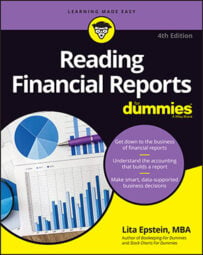Like the Sales line item, the Cost of goods sold line item has many different pieces that make up its calculation on the income sheet. You don't see the details for this line item unless you're a company manager. Few firms report the details of their cost of goods sold to the general public.
Items that make up the cost of goods sold vary depending on whether a company manufactures the goods in-house or purchases them. If the company manufactures them in-house, you track the costs all the way from the point of raw materials and include the labor involved in building the product. If the company purchases its goods, it tracks the purchases of the goods as they're made.
In fact, a manufacturing firm tracks several levels of inventory, including
Raw materials: The materials used for manufacturing
Work-in-process inventory: Products in the process of being constructed
Finished-goods inventory: Products ready for sale
Sometimes tracking begins from the time the raw materials are purchased, with adjustments based on discounts, returns, or allowances given. Companies also add to the income statement's cost of goods sold section freight charges and any other costs involved directly in acquiring goods to be sold.
When a company finally sells the product, it becomes a Cost of goods sold line item. Managing costs during the production phase is critical for all manufacturing companies. Managers in this type of business receive regular reports that include the cost details. Trends that show dramatically increasing costs certainly must be investigated as quickly as possible because the company must consider a price change to maintain its profit margin.
Even if a company is only a service company, it likely has costs for the services it provides. In this case, the line item may be called Cost of services sold instead of Cost of goods sold. You may even see a line item called Cost of goods or services sold if a company gets revenue from the sale of both goods and services.

